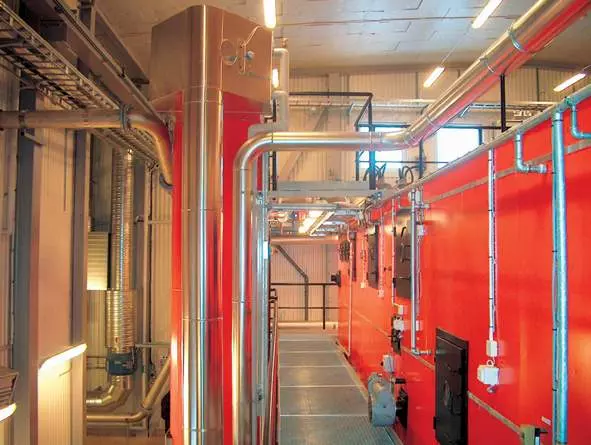BioCo™ : Veolia Water Technologies’ sludge dryer
Overzicht
Drying sludge has several advantages, including:
- Sanitization: sludge is dried at over 80°C during more than one hour, removing pathogenic germs (USEPA Class A);
- Stabilization: biological activity in sludge is stopped by drying;
- Tonnage reduction: water in sludge is almost completely removed which reduces sludge tonnage to 1/5 - 1/3;
- Better sludge utilization: it can be used without causing problems, storage is easier, and spreading is feasible with conventional fertilizer spreading resources. Sludge is a high quality fuel which is suited to various combustion methods.
Features & Benefits
In addition to optimal drying, the BioCo™ technology brings other benefits.
- Operational security and safety:
>The drying air and sludge circulate in co-current, which limits fire risks. The drying air gets into the dryer at a maximum temperature of approximately 170°C, while the sludge enters at a temperature of approximately 20°C.
>The BioCo™ dryer works without dried sludge recycling, preventing the formation of dust. This eliminates the fire risk related to its inflammation.
> This highly automated system has sensors, detectors, alarms, stopping procedures and a sprinkler system. It is also characterized by its low belt speed. - BioCo™ works at relatively low temperature; between 170-120°C during the first drying step and between 100-80°C for the second. Several heating systems can be used to achieve these temperatures.
- The drying plant is maintained in slight negative pressure by a centrifugal fan ensuring continuous extraction of a part of the drying air. In a conventional configuration, the noncondensables and the excess air return to complement the boiler combustion air. The tightness of the sludge distribution system seals prevents any odor emissions.
- The BioCo™ dryer is a tried and tested industrial tool with 22 references around the world.
- The range is available in 10 models, covering evaporation capacities from 500 to 3,000 kg/h

Specific Applications
In some cases, it is possible to couple BioCo™ technology with other Veolia processes for more efficiency.
- Rosny, France, 2013, drying before incineration (Pyrofluid™), 142 000 PE
- Evry, France, 2013, drying with biogas air heater, 250 000 PE
Main References
- Marquette lez Lille, France, 2015, 620 000 PE
- Alderwood, USA, 2013, 100 000 PE
- Pomorzany, Poland, 2011, 420 000 PE
- Draguignan, France, 2006,70 000 PE
Toepassingen
BioCo Principle: Indirect Drying on Belts
The BioCo™ dryer is completely air-tight and sealed. It is equipped with 2 stainless steel belts placed one above the other. The sludge retention time in the dryer exceeds 60 minutes.
The sludge drying process is undertaken by circulating hot drying air through the sludge layer on the belts. The drying conditions provide a dry solid content in the sludge of 90% minimum at the dryer outlet.
The unique distributor system lays sludge strings uniformly over the width of the start belt by means of special rubber nozzles, providing optimal sludge drying conditions.
The drying air is heated by thermal fluid heat exchangers. This can be produced by a boiler (steam or thermal oil), an air heater, an incinerator or by cogeneration.
The BioCo™ dryer can be fitted with two optional systems:
BioCo™ Energy Exchange System (BEES): Heat recovery on drying air
- The BioCo™ Energy Exchange System (BEES) is a condensing heat exchanger which enables condensation of part of the water vapour contained in the drying air and raising the temperature of the cooling water circuit. The warm cooling water can be used for digester, building or other processes heating.
- Condensate is, most of the time, returned in the WWTP inlet.
BioCo™ Energy Recovery System (BERS): heat production by dried sludge combustion
The BioCo™ Energy Recovery System (BERS) contains a dried sludge combustion system. The heat required for sludge drying is normally produced without fossil energy consumption, and the residual sludge quantity can be minimized.


